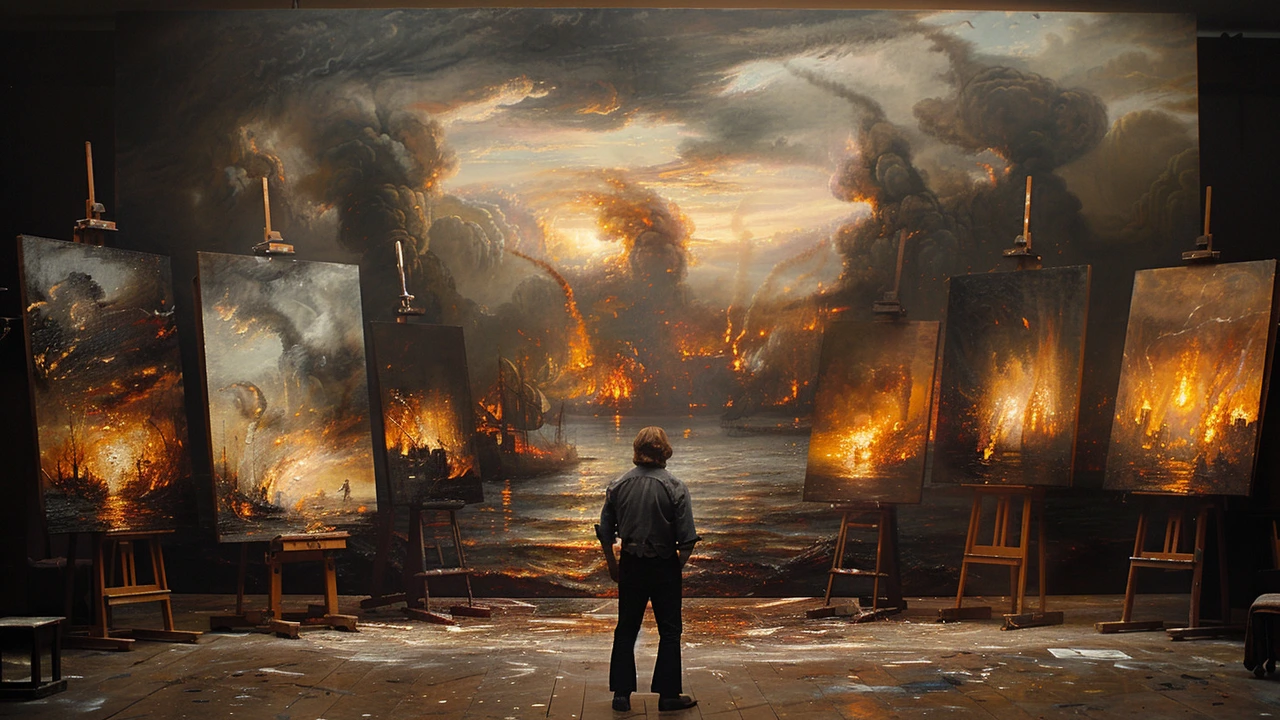Introduction to Expressionism
When we talk about Expressionism, we're delving into not just an art movement, but a revolutionary way of thinking and perceiving the world. Born out of the need to express the inner state rather than the external reality, Expressionism emerged in the early 20th century as a forceful wave that sought to portray emotions and subjective interpretations rather than replicate objective reality. This movement found its roots in Germany but quickly influenced various forms of creative expression worldwide, including painting, literature, theatre, and cinema.
The Historical Context of Expressionism
Understanding the historical backdrop against which Expressionism emerged is crucial in appreciating its intensity and drive. The late 19th and early 20th centuries were times of significant turmoil and change; the world was on the brink of the industrial revolution, and the social order was in flux. These changes brought about an introspective reflection among artists, leading to the rejection of traditional artistic values. This period was further marked by the horrors of World War I, which profoundly influenced Expressionist artists, steering their work towards themes of despair, alienation, and a deep yearning for authenticity.
Characteristics of Expressionist Art
Expressionism is marked by its emphasis on emotional experience over physical reality. Artists utilized distorted forms, exaggerated perspectives, and jarring colors to evoke a subjective response from the viewer. This movement wasn’t tied to a specific style or technique but rather an approach to art that prioritizes emotional impact. Furthermore, Expressionism branched into various sub-movements, including Die Brücke and Der Blaue Reiter, each bringing its unique interpretation and style to the fore.
Key Figures and Works
Expressionism boasts an array of influential figures whose works continue to captivate and inspire. Artists such as Edvard Munch, with his iconic work 'The Scream,' and Wassily Kandinsky, known for his abstract compositions, were pivotal in shaping the movement’s direction. Equally important were writers and playwrights like Franz Kafka and Bertolt Brecht, who mirrored Expressionism’s themes in their narratives. These key figures rejected realism, opting for a more evocative portrayal of the human condition.
Influence on Modern Art and Culture
The ripples of Expressionism are evident across a broad spectrum of modern art and culture. Its impact extended beyond the visual arts, influencing literature, film, and theater, paving the way for movements like Surrealism and Abstract Expressionism. Expressionism encouraged a more personal, introspective approach to artistic creation, allowing artists to explore themes of existential dread, emotional turmoil, and profound introspection in their work.
Tips for Recognizing Expressionist Art
Identifying Expressionist art can be an exciting endeavor. Look for works characterized by an emphasis on emotional expression over realism, vivid, sometimes shocking color palettes, and dynamic, exaggerated forms. These pieces often convey a sense of anxiety or intensity, reflecting the tumultuous period in which the movement was born. Additionally, many Expressionist works explore themes of social critique, alienation, and the deeper layers of the human psyche.
Conclusion
The unmistakable impact of Expressionism on the art world and beyond is a testament to its enduring influence. This movement not only changed the way artists perceive and depict the world but also offered new avenues for viewers to engage with art on a profoundly emotional and psychological level. Expressionism’s legacy persists, challenging artists and audiences alike to confront the complexities of the human experience through the power of creative expression.




